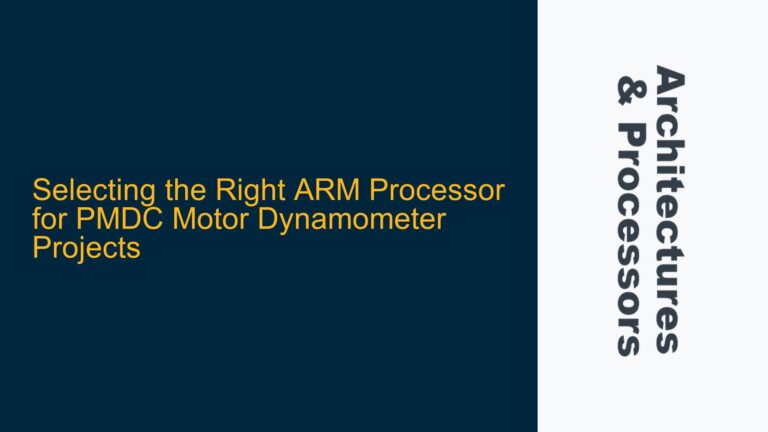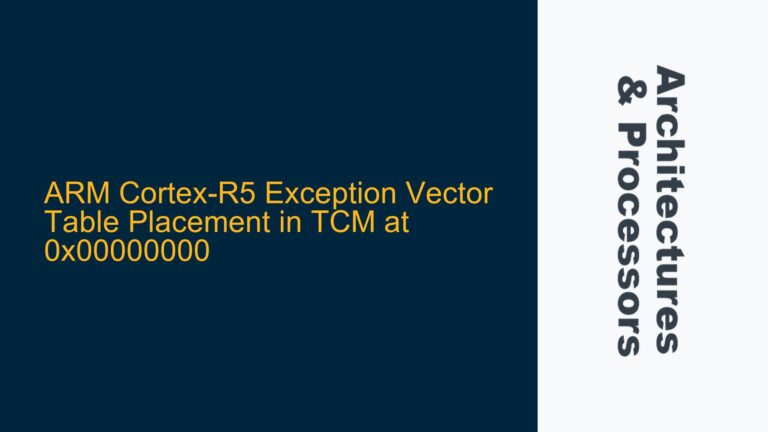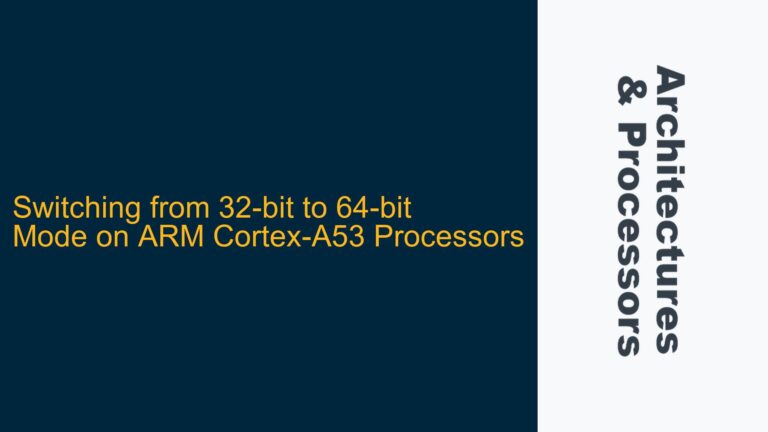ARM VMSAv8-32 Address Translation and Virtual Address Bit Allocation
The ARM VMSAv8-32 architecture employs a multi-level page table structure to translate virtual addresses (VA) to physical addresses (PA). This translation process is critical for memory management in ARM-based systems, ensuring efficient and secure access to memory resources. The specific allocation of virtual address bits for indexing into different levels of the page table hierarchy is a design choice that balances memory efficiency, performance, and hardware complexity.
In the VMSAv8-32 architecture, the virtual address is divided into segments that correspond to different levels of the page table hierarchy. For instance, bits [31:30] of the virtual address are used to index into the Level 1 (L1) page table, while bits [29:21] are used to index into the Level 2 (L2) page table. This segmentation is not arbitrary but is carefully designed to optimize the translation process.
The L1 page table typically covers a large address space, often in the order of gigabytes, while the L2 page table covers a smaller address space, usually in the order of megabytes. By using the higher-order bits of the virtual address to index into the L1 table, the architecture ensures that the L1 table can efficiently manage large contiguous memory regions. The subsequent bits are then used to index into the L2 table, which provides finer granularity for smaller memory regions.
This hierarchical approach reduces the memory footprint of the page tables. Instead of having a single, monolithic page table that would require a significant amount of memory, the multi-level structure allows for sparse memory usage. Only the necessary parts of the page table hierarchy are populated, saving memory resources. This is particularly important in embedded systems where memory is often at a premium.
Memory Efficiency and Hierarchical Page Table Design
The choice of using specific bits of the virtual address to index into different levels of the page table hierarchy is driven by the need for memory efficiency. In a flat page table structure, the entire 4GB address space would require a single table with 1 million entries, assuming 4KB pages. Each entry would typically be 8 bytes, resulting in an 8MB page table. This is impractical for many systems, especially those with limited memory resources.
By splitting the page table into multiple levels, the system can reduce the memory overhead. The L1 table, which covers larger memory regions, can be much smaller. For example, if the L1 table covers 1GB regions, it would only need 4 entries, each pointing to an L2 table. The L2 tables, which cover smaller regions, can be allocated on demand, only when needed. This results in significant memory savings, as the majority of the address space may remain unused in many applications.
The hierarchical design also allows for more efficient memory management. Large, contiguous memory regions can be managed with a single entry in the L1 table, while smaller, more fragmented regions can be managed with L2 tables. This flexibility is crucial for systems that need to handle a wide range of memory usage patterns, from large, monolithic applications to smaller, more dynamic processes.
Implementing and Optimizing Page Table Indexing in ARM VMSAv8-32
To implement and optimize page table indexing in ARM VMSAv8-32, it is essential to understand the role of each bit in the virtual address and how it maps to the page table hierarchy. The following steps outline the process of translating a virtual address to a physical address using the multi-level page table structure.
First, the virtual address is divided into segments that correspond to the different levels of the page table hierarchy. For example, in a two-level hierarchy, bits [31:30] might be used to index into the L1 table, while bits [29:21] are used to index into the L2 table. The remaining bits of the virtual address are used as the offset within the final physical page.
The L1 table entry, obtained by indexing with bits [31:30], contains a pointer to the base address of the L2 table. This pointer is combined with the index obtained from bits [29:21] to locate the specific entry in the L2 table. The L2 table entry then contains the base address of the physical page, which is combined with the offset from the virtual address to produce the final physical address.
Optimizing this process involves ensuring that the page tables are efficiently organized in memory. This includes aligning the tables to appropriate boundaries to minimize the number of memory accesses required for translation. Additionally, the use of Translation Lookaside Buffers (TLBs) can significantly speed up the translation process by caching recently used translations.
In conclusion, the allocation of virtual address bits for indexing into the page table hierarchy in ARM VMSAv8-32 is a carefully considered design choice that balances memory efficiency, performance, and hardware complexity. By understanding the role of each bit in the virtual address and how it maps to the page table hierarchy, developers can implement and optimize memory management in ARM-based systems effectively.






